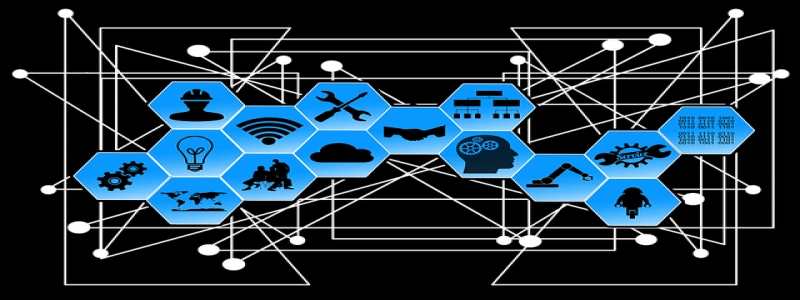Managed Ethernet Switches
I. Introduction
A. Definition of Managed Ethernet Switches
II. Benefits of Managed Ethernet Switches
A. Enhanced Network Control and Security
B. Improved Performance and Reliability
C. Simplified Network Management
III. Key Features of Managed Ethernet Switches
A. VLAN Support
B. Quality of Service (QoS) Features
C. Power over Ethernet (PoE) Support
IV. Applications of Managed Ethernet Switches
A. Enterprise Networks
B. Data Centers
C. IP Surveillance Systems
V. Important Considerations when Choosing Managed Ethernet Switches
A. Port Density and Speed
B. Scalability
C. Management Interface Options
VI. Case Study: Implementation of Managed Ethernet Switches in Company XYZ
A. Overview of Company XYZ’s Network Infrastructure
B. Reasons for Choosing Managed Ethernet Switches
C. Successes and Challenges in the Implementation
VII. Conclusion
A. Recap of Benefits and Features of Managed Ethernet Switches
B. Importance of Choosing the Right Managed Ethernet Switches for Different Applications
Managed Ethernet Switches
I. Introduction
Managed Ethernet switches are network devices that allow for the efficient management and control of network traffic. Unlike unmanaged switches, managed switches offer a wide range of advanced features and functionalities that provide enhanced network control, security, and performance.
II. Benefits of Managed Ethernet Switches
Managed Ethernet switches offer several advantages over their unmanaged counterparts.
A. Enhanced Network Control and Security
Managed switches allow network administrators to have granular control over network traffic. They support features such as access control lists (ACLs), which enable administrators to define and enforce security policies. VLAN support allows for the segmentation of networks, improving security and reducing the risk of unauthorized access.
B. Improved Performance and Reliability
With features like Quality of Service (QoS), managed switches prioritize and allocate bandwidth based on application requirements. This prevents network congestion and ensures smooth operation of critical applications. Additionally, managed switches often have redundant power supplies and cooling systems, enhancing their reliability.
C. Simplified Network Management
Managed switches provide a central management interface that allows administrators to configure, monitor, and troubleshoot the network. They offer features like remote management, SNMP (Simple Network Management Protocol) support, and comprehensive reporting capabilities, making network administration tasks more efficient.
III. Key Features of Managed Ethernet Switches
Managed switches come with a variety of features that contribute to their advanced functionality.
A. VLAN Support
VLANs allow for the logical segmentation of networks, creating isolated subnetworks for improved security and performance. Managed switches offer VLAN support, enabling administrators to separate traffic and control access between different departments or user groups.
B. Quality of Service (QoS) Features
QoS features prioritize certain types of network traffic over others, ensuring that critical applications receive the necessary bandwidth and minimizing latency. Managed switches often support QoS mechanisms such as traffic classification, queuing, and scheduling.
C. Power over Ethernet (PoE) Support
PoE support eliminates the need for separate power cables for network devices such as IP phones, Wi-Fi access points, and security cameras. Managed switches with PoE functionality can supply power over Ethernet cables, simplifying installation and reducing costs.
IV. Applications of Managed Ethernet Switches
Managed Ethernet switches find applications in various network environments.
A. Enterprise Networks
In large enterprises, managed switches are essential for providing network connectivity to numerous devices. They offer the flexibility to configure and manage the network according to specific requirements, ensuring efficient and secure communication across the organization.
B. Data Centers
Data centers require high-performance networks with reliable connectivity. Managed switches offer advanced features like link aggregation, which combines multiple network links for increased bandwidth and redundancy. They also support virtualization technologies, facilitating efficient resource allocation and management.
C. IP Surveillance Systems
Managed switches are widely used in IP surveillance systems, enabling the connection of IP cameras and other security devices. The advanced features of managed switches, such as VLANs and QoS, optimize network performance and ensure secure and reliable video transmission.
V. Important Considerations when Choosing Managed Ethernet Switches
When selecting managed switches for a network, several factors need to be taken into account.
A. Port Density and Speed
Consider the number of devices that need to be connected and the expected network traffic. Ensure that the switch has an adequate number of ports and supports the required speeds (e.g., Gigabit Ethernet) to accommodate the network’s needs.
B. Scalability
Choose switches that allow for easy scalability, so that additional devices can be added to the network without causing disruptions. Features like stacking or the ability to connect multiple switches will simplify network expansion.
C. Management Interface Options
Consider the preferred management interface, such as a web-based GUI or a command-line interface (CLI). Different interfaces may offer varying levels of ease of use and functionality, so selecting the right one is crucial for efficient network management.
VI. Case Study: Implementation of Managed Ethernet Switches in Company XYZ
A. Overview of Company XYZ’s Network Infrastructure
Company XYZ, a large multinational corporation, had an outdated network infrastructure that lacked the necessary control and performance. They decided to upgrade to managed Ethernet switches to address these issues.
B. Reasons for Choosing Managed Ethernet Switches
Company XYZ chose managed switches for their ability to provide granular control over network traffic, enhance security, and improve performance. They also wanted a central management interface to simplify network administration tasks.
C. Successes and Challenges in the Implementation
The implementation of managed switches in Company XYZ’s network proved successful. They experienced improved network performance, reduced security risks, and simplified network management. However, they faced challenges during the transition and had to train their IT staff on operating and configuring the new switches.
VII. Conclusion
Managed Ethernet switches offer numerous benefits, including enhanced network control, improved performance, and simplified management. The various features, such as VLAN support, QoS capabilities, and PoE functionality, make managed switches suitable for a wide range of applications. When choosing managed switches, considering factors like port density, scalability, and management interface options is crucial. With careful selection and implementation, managed switches can greatly enhance the efficiency and reliability of a network.








